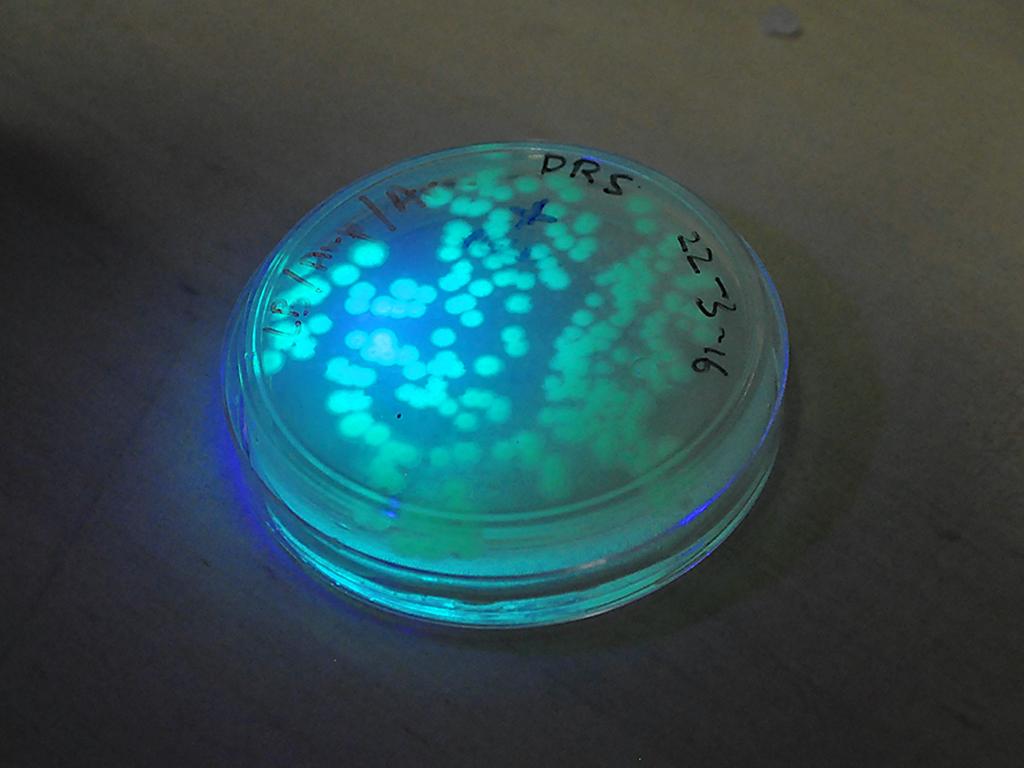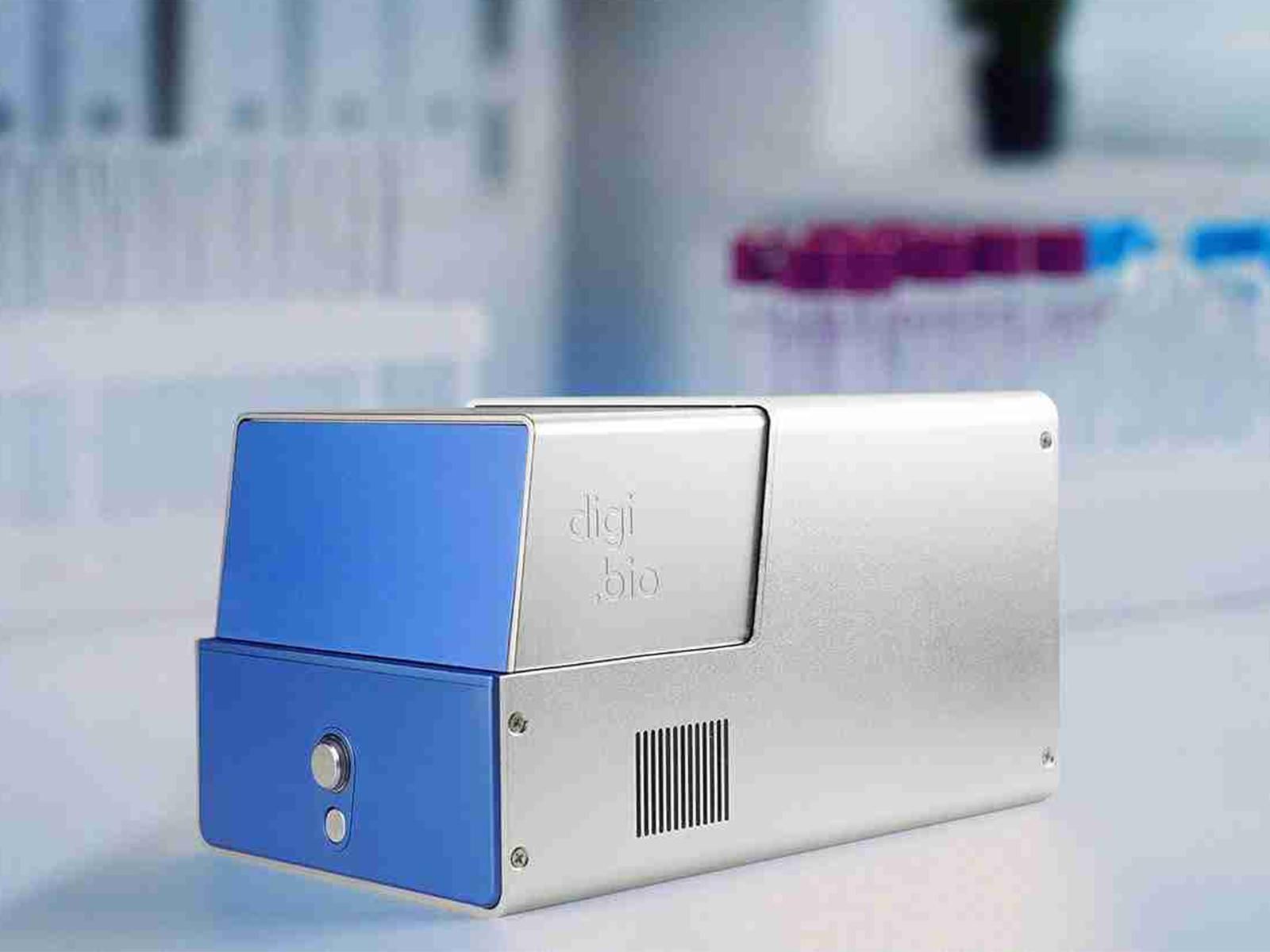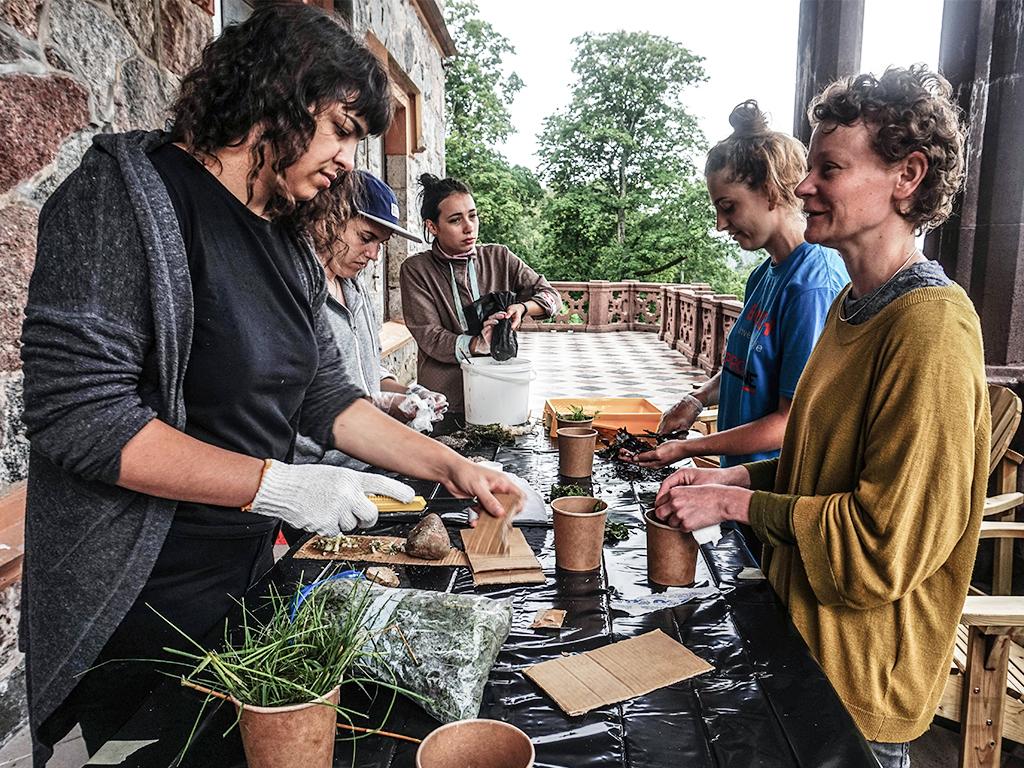Tuesday the 22nd of March and Thursday the 24th, a two-evening workshop about genetic modification was organised by artist in resident Špela Petrič, head of the Open Wetlab Pieter van Boheemen and the Waag’s safety officer Per Staugaard.
It was clear this was going to be a very exciting workshop. First of all, because genetically modified glowing bacteria were made. Second, because this workshop was only possible due to a recent change in the law, allowing the Waag to get a GMO permit. This makes us the first public cultural institution with such a permit, enabling the society to engage in synthetic biology. And third, the registration for this workshop was complete within several hours, confirming the excitement of the public. Attendees had a variety of backgrounds; from complete lay persons to journalists and people from the Ministry of Infrastructure and Environment.
GMOs, not so bad at all?
Špela started the evening with reviewing the question ‘what exactly is a genetically modified organism?’ Theoretically speaking, a GMO is nothing more than an organism “in which the genetic code has been changed”, Špela explained. “Genetic modification is actually something that we have been doing for centuries”. Think of the dogs that we pet these days versus the wolf they originate from. Also the bananas we eat do not resemble wild bananas. These organisms are genetically modified to meet our human needs.
Interestingly, genetic modification is also a naturally occurring phenomenon. Bacteria employ this mechanism to gain properties such as antibiotic resistance. Additionally, viruses can ‘store’ their genetic content in the organism they are infecting, thereby genetically modifying its host. In fact, our own DNA is full of junk-DNA originating from viruses. This concept of genetic modification Špela illustrated is much broader than what we often think of or what is illustrated by the press. Genetic modification reported by the press is often related to agriculture and in a negative context. However, GMOs are much more widely used in for example the medical and pharmaceutical field, of which you hardly hear anything. Genetic modification may not be so dark at all!
Did it work?
After the safety instructions of Per, the theoretical background and the practical instructions of Špela it was time to actually go into the lab; the place where the magic happens! Practically, creating genetically modified glowing bacteria is nothing more than adding two things into a tube and mix it. However, the excitement of participants and them not being accustomed to the laboratorial techniques, such as sterile working, made this rather simple assignment quite complex. Subsequently, we had to wait until Thursday for the results. But in the meantime Špela had a little, quite smelly, surprise to show that you do not per se need to genetically modify an organism to let it glow. Squids actually live in symbiosis (positive interaction) with glowing bacteria which helps the squids to become invisible for predators. So in groups of tree we went into the toilet to look at a fresh squid that had been deteriorating the fridge for four days. But it was glowing!
On Thursday everybody started with excitement again; did it work? Was everybody able to make genetically modified organisms? The answer is: yes! The bacteria were glowing! In advance, some participants were sceptical about their laboratorial skills but the outcome demonstrated that, although the theoretical background can be hard to digest, laboratorial techniques aren’t always rocket science. The evening was continued with making tumours in tomato plants. Since this also occurs in nature, it is not a GMO according to the law. We will keep you posted on the outcomes of this experiment.
To be continued
The evening was ended with a discussion concerning the use of GMOs. Participants were mostly interested in what you are allowed to do within this permit or at home. Mostly with respect to CRISPR/Cas9. One of the participants was of believe that permits are always suppressive tools instead of empowering. Someone else added that education should be free and not limited by for example permits. Another participant wondered why we even bothered doing these experiments as they have been performed before and aren’t innovative. Maybe the experiments weren’t innovative but they were very illustrative. Summarising, it were two very interesting evenings of which everybody got new insights and inspiration for future projects.


